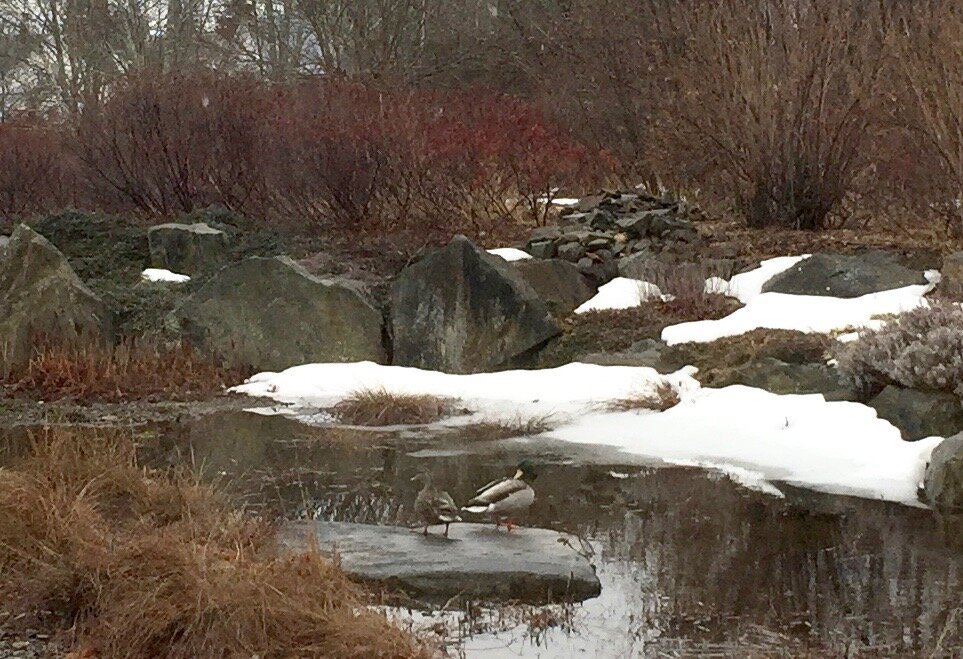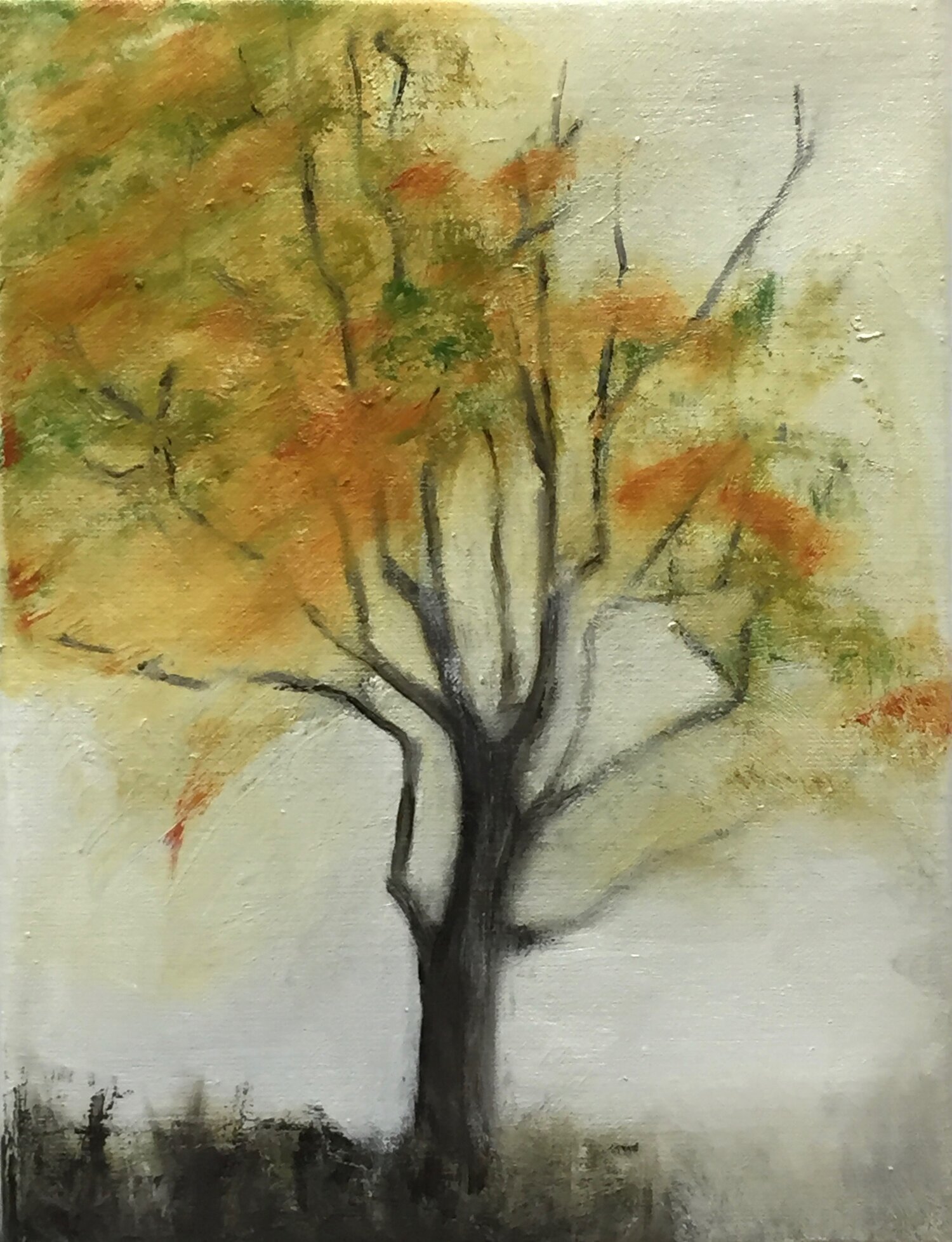Hot on the Trail - Habitat Restoration and the Paintings It Inspires
"Is not January the hardest month to get through? When you have weathered that, you get into the gulf-stream of winter, nearer the shores of spring." Henry David Thoreau
January's a good time for getting outside to see who else shares the landscape around here. Can you just make out the ducks in the rain garden above? Fox and weasel rarely show themselves during the day, and coyotes never. They all leave tracks in new snow though, and by following those, I can see where they've been and where they're headed. Vocalizations are another sure sign. In a few weeks a fox will scream at night, as mating season kicks in. One morning recently, I woke up feeling that a renewal is ahead. It won't happen without work, but there's a better day coming.
Ever the optimist, I make my outdoor rounds believing that this will be the year when I wipe out the last of the multiflora rose and go after the bittersweet that's regenerated over on the west bank. But there's only so much one person can do, right? And anyway, I'd rather be painting. So this year I'll let native plants have their way in the bed above the rain garden. This year I'll thank the goldenrods and asters for filling in the meadow and offering their flowers to so many butterflies. This year I'll be astonished again at the expanse of sensitive fern in the wetland out back, where in a couple of months, woodcocks will arrive.
Last November, I listed some of my favorite organizations that work to protect the environment. This year, in continued support of the living earth, my projects will focus on habitat restoration right here at home. I'll dedicate a percentage of sales to fund my longterm plan that began in earnest last year. I worked with an arborist to root out the tangles of multiflora rose that had completely taken over the creek bank along the driveway. As more changes are made, islands of red oak, red maple, and crabapple will re-establish themselves. Alder and grey birch are already providing food and nesting sites. The numbers of migrating and resident warblers have multiplied in the twelve and a half years I’ve lived here. Pretty soon, local red-winged blackbirds and phoebes will be back, with transitory white-throated sparrows not far behind.
Somehow too, each seasonal change announces itself in my paintings. Try as I may, it's hard to paint a tree budding in spring when its foliage is long gone and snow is on the ground. The painting of the red maple that began with green leaves tipped with orange and gold shifted, as I tracked what was and what is. Of course, this month the tree is completely bare, and I owe it another painting.
Red Maple Autumn, 2019, oil on linen, 12 x 9 inches
Another approach, especially during those times when it's 9 degrees outside, is to use an analog photograph as a memory jog. Bogs have called to me ever since I began coming to Maine and drove up through Hancock and Washington Counties looking for places to hike. One of my favorite bogs is at Quoddy Head, though I've also found bogs closer to home. Pettengill Swamp (aka Pettengill Bog) drains into the Medomak River, and contains a red maple fen. There are red maples all around my upper field here in Lincolnville, in two acres that drain right into the creek and on to Penobscot Bay.
The spent blooms of hydrangeas hang on through the winter, reminders both of permanence and of ephemerality. Years ago I rescued some hydrangeas on the property and moved them closer to the house where I can note their shapes and colors throughout the year. In late summer, the blooms are full of a variety of pollinators large and small. And in winter, the faded flower heads hang on until they blow off in a hard wind. I gotta love a bush that's self-pruning.
Peonies are among the few plants I've introduced to the landscape, and so, jumping the gun on early summer, I have to post this painting from last fall. From the moment the peonies shed their petals, I'm thinking forward to their re-appearance in coming years. It took me a long time to approach peonies in a painting, but now that I have, I am certain there'll be more paintings and drawings to come, just as soon as I can work from the live models.
A further reason I paint landscapes is to learn how to paint landscapes. There’s more about that, and more paintings, in my Pecha Kucha talk, “Why I paint landscapes.” Look for it on the Landscape Page.
Festiva Maxima, 2019, oil on linen, 9 x 12 inches


